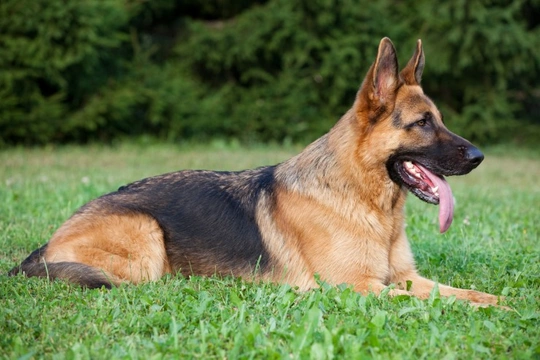
How German shepherds have changed over time – and how this has affected the breed
The German shepherd has long been one of the most popular large dog breeds in the UK, and they’re also the ninth most popular breed over all – beating out well over two hundred other dogs to achieve their position.
However, whilst this breed has never really gone out of fashion, the German shepherd itself has changed significantly over the course of the last century in terms of their physical appearance, breed standard, and what are considered to be desirable breed traits.
Many of these changes have been less than positive in terms of the impact that they have on the general health and wellness of the breed – because selective breeding to produce specific exaggerations or change the dog’s natural physical traits all come at a cost.
In this article we will examine how the German shepherd has changed over the course of the last hundred years or so, and the impact that this has had on dogs of the breed. Read on to learn more.
Size and weight
Today’s German shepherds fall firmly into the large dog category, with males of the breed standing between 60-65cm tall at the withers, and females between 55-60cm. The weight range across dogs of the breed runs from 30-40kg for males, and 22-32kg for females.
However, going back to the first couple of decades of the 20th century, the breed as a whole was much smaller – they were classed as a medium to large breed rather than a large breed per se.
The average weight across the breed as a whole was a lot lower too – averaging just 25kg across both males and females, which is a whole 15kg less than the accepted top end weight for one of today’s pedigree males.
The chest
Historically, German shepherds were very proportionate in terms of their physical build, being strong but not heavy or overly muscular. The chest of the breed was bang in the middle of the normal range for a dog of the size, being neither particularly deep nor narrow.
Today’s German shepherds have a much deeper and wider chest, which places the breed at a higher risk of problems such as GDV or bloat.
The slope of the back and hind legs
Perhaps the most acute change that the German shepherd has undergone over the course of the last century relates to their spine and hind legs. Historical German shepherds had a much more level back, with only a very small degree of slope towards the hind legs.
Today, however, there is a high degree of exaggeration and the slope from front to back is much more acute, particularly in show-quality dogs, with a noticeable slant from the withers to the base of the tail being highly rewarded in the show ring.
The hind legs of the breed have also changed accordingly, and rather than being fairly straight and upright, the hind legs of dogs of the breed that are generally classed as good quality show dogs are also a lot more sloped and follow a more acute angle.
This trait has caused one of the largest problems that the breed faces today – a predisposition to hip and elbow dysplasia, which are very painful conditions that can be crippling for dogs of the breed.
Hip score testing is now strongly advised for breeders prior to making a mating match, to limit the spread of these conditions across the breed, as they have now become prevalent within the breed’s gene pool. Dogs with an overexaggerated slope to the back and hind limbs are most at risk.
Movement and gait
As the shape of the dog’s back, spine and hind legs have changed over time, so too has the breed’s gait across dogs that possess exaggerated features. The dog’s running stride will often be slow and rolling, and there’s not as much power in the hind limbs as a result of breeding in exaggerations.
Even when walking, many dogs of the breed that possess conformation exaggerations have a fairly unsteady-looking gait, with more sway side to side than their more balanced, compact historical ancestors.
The coat
The German shepherd coat has also changed somewhat over time too – even shorthaired dogs of the breed tend to have a denser and slightly longer coat that would have been seen on dogs of the same breed historically.
Additionally, whilst historically longhaired German shepherds were considered to be an undesirable anomaly that fell outside of the desired breed standard and meant the dog would be ineligible to win show prizes, today, longhaired German shepherds are not only permitted, but also reasonably common.
The spread of hereditary health issues
All of the changes that have occurred across the German shepherd breed as a whole have been caused by deliberate selective breeding to enhance certain traits that are subjectively considered to be desirable, and to breed out less desirable traits.
This means that the associated health problems that breeding in exaggerations causes, as well as the limitation instilled by breeding from dogs from within a comparatively narrow gene pool mean that the German shepherd today has a long list of hereditary health issues that are prevalent across the breed.
German shepherd breed clubs and the Kennel Club strongly advise hip and elbow scoring for dogs of the breed, as well as testing for haemophilia, chronic degenerative radiculomyelopathy, and eye health.
A range of other conditions are also common across the breed as well, which means that asking the breeder of any dog you might be considering buying about the health of their ancestors and what health tests they have undergone is really important for potential puppy buyers.



